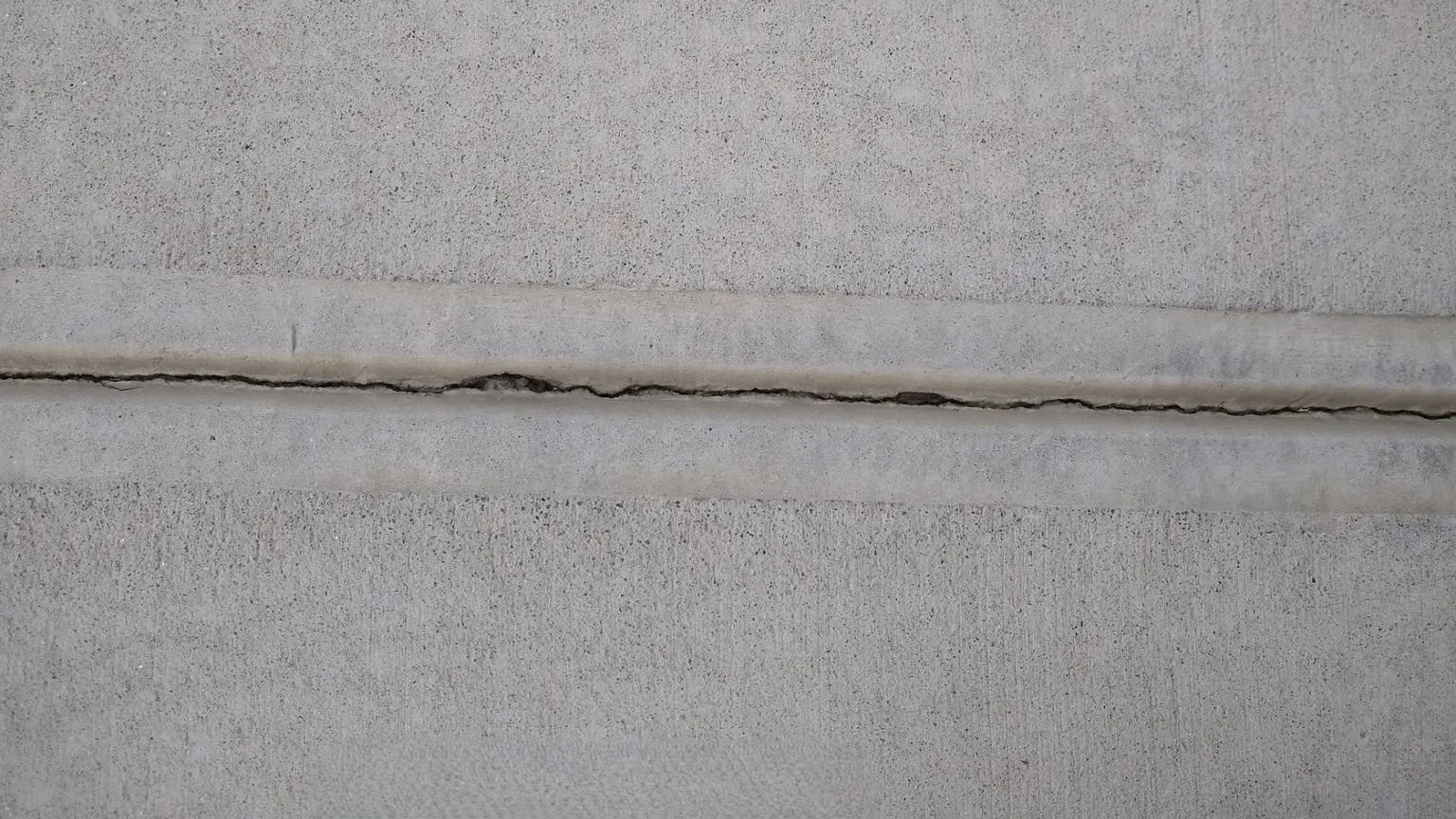When a new concrete slab is poured, one of the most common questions is:
“Why do cracks appear inside the joints, and is that normal?”
The short answer is yes, it’s completely normal. In fact, it means your concrete is performing exactly as designed.

Understanding the Role of Control Joints
Concrete naturally expands and contracts as temperature and moisture levels change. When it shrinks during curing or due to temperature drops, it creates internal tension. If these forces are not controlled, the concrete will crack randomly across the surface, often in unwanted areas.
This is why control joints, also known as contraction joints, are cut into the slab. These joints act as intentional weak points that allow the concrete to release stress in a specific place. Instead of random cracking, the stress is directed straight down the joint, keeping the slab clean and intact on the surface.
Why Cracks Form Inside the Joint
During curing, the top of the slab dries and shrinks faster than the bottom. This uneven shrinkage creates internal stress. The control joint offers a defined path of least resistance, encouraging a thin, often invisible crack to form directly beneath it.
This small crack is called a controlled crack. It usually stops a few inches below the surface and does not go beyond the joint. You won’t see it unless the concrete is cut open, and that’s exactly the point. The crack is hidden and controlled.
What Happens Without Joints
If joints are spaced too far apart or are not cut deep enough, cracks will still form, but in unpredictable places. These uncontrolled cracks may run across the slab and affect driveways, patios, or floors, impacting appearance and long-term durability.
On the other hand, a properly placed and cut joint ensures the crack happens where intended. The result is a clean, straight, and harmless crack.
Key Takeaway
Cracks inside control joints are not a defect. They are evidence that the concrete is relieving internal stress correctly. A properly jointed slab can expand and contract for decades without random surface cracking.
In summary:
A crack inside the joint means the system is working, not failing.
Properly placed control joints are engineered to manage concrete stress safely and effectively. Our concrete solutions are designed to handle shrinkage, temperature changes, and internal pressure, keeping your slab intact, stable, and built to last.
Contact us today for a free concrete work assessment for your Atlanta property.
